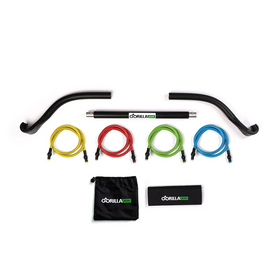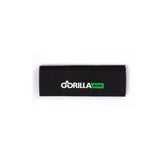8 Easy Ways to Stay in Shape During the Winter Months

Winter isn’t an ideal season for exercise. Freezing temperatures, snowstorms and holiday distractions make it challenging to follow a fitness routine. These obstacles are legitimate reasons to skip a few days, but they shouldn’t stop you from reaching your goals. Here are eight easy ways to stay in shape during these chilly months,
1. Try a Winter Sport
If your daily routine is getting stale, try a winter sport to shake things up. There are a handful of indoor and outdoor activities that could substitute for your workout routine:
- Swimming: Few other sports can match the health benefits of swimming. It provides a full-body workout, eases tension on your joints, helps people recover from injuries and burns more than 400 calories per hour.
- Basketball: Basketball is an ideal cardio workout. It involves nonstop movement, so you’ll get thousands of steps in a short period. It will also put your hand-eye coordination to the test.
- Ice hockey: Hockey is a fantastic all-around sport to keep you in shape. The pace of play will have you gasping for air in just a few minutes, and the physicality will force you to unlock your upper body strength. Handling the puck requires intense concentration.
- Ice skating: If hockey is too violent for your taste, try ice skating instead. Skating burns the same amount of calories as running, but it’s a lot more fun and challenging.
- Skiing/snowboarding: Hitting the slopes for a few hours will leave you thoroughly exhausted and satisfied with your workout. It’s always a good idea to exercise in natural environments.
- Curling: Most people don’t consider curling a physically challenging sport, but it’s more tiring than you think. It requires precise muscle memory, and the sweeping motion is a good upper-body workout. It’s also a fun strategy game.
People who feel confined in their routines may see their discipline wane. You might not have the will to exercise every day, but the workout itself shouldn’t be the reason. Feel free to try something new to maintain your passion and motivation for fitness.
2. Invest in Cold Weather Gear
If you want to maintain your fitness commitments this winter, you’ll have to drop some money on cold-weather gear. Exercising in the cold brings many unique challenges:
- Higher calorie expenditure: Bodies burn more calories during the winter because metabolic rates increase to maintain warmth. Shivering and chattering teeth also burn calories, believe it or not.
- Unexpected dehydration: Breathing cold air contributes to more bodily fluid loss. The feeling of thirst also takes longer to set in during the winter, so dehydration isn’t always apparent until it reaches dangerous levels.
- New injury risks: Freezing temperatures can cause frostbite and hypothermia, even while exercising. Ice and snow make many outdoor surfaces unsafe. Susceptibility to sunburn increases as well because the sun is closest to Earth during the winter.
Workout clothes with thermal insulation and good traction make winter exercise safer and enables you to follow your routine without interruption. Your head, face, hands and feet are especially important.
3. Exercise With Others
Cold weather can negatively impact your mood and energy levels. If you experience this problem, you need to find a new source of motivation. Exercising with other people will give you a pleasant change of pace. Workout partners provide real-time encouragement and hold you accountable on your bad days.
You could try group exercise or a one-on-one personal training session. Both options have their advantages. Group classes help beginners feel more comfortable with exercising. They also encompass all kinds of workout varieties, from yoga to cycling to kickboxing.
Personal trainers are better for people with specific goals in mind. If you want to lose a certain number of pounds or improve a particular exercise, you would greatly benefit from a PT. Both environments will keep you engaged and expand your workout knowledge.
You could also do these simple things to make fitness a bigger part of your social life:
- Document your fitness journey on social media. With your goals made public, you will feel more motivated to follow them.
- Take full advantage of social occasions. Do outdoor activities with friends and family, join a local recreational sports league and go on adventures with your significant other.
- Join an online fitness forum or group chat. There are all kinds of niche fitness communities for running, bodybuilding, yoga, cardio and more. You can easily find like-minded people online, no matter your fitness interest.
Winter’s dark days and freezing temperatures make it challenging to stay enthusiastic. Don’t feel pressured to remain silent and independent. Even professional athletes and personal trainers need support from friends and family, so let other people become a bigger part of your wellness journey.
4. Build a Home Gym
Exercising outside and going to the gym sometimes become impossible due to winter storms. You need a backup plan in case of bad weather. Put together a simple home gym so you can still complete an effective workout when you’re snowed in. The equipment doesn’t have to be complex or expensive. These items are more than enough for a home setup:
- Yoga mat
- Jump-rope
- Exercise bands
- Pull Up bar
- Workout bench
- Lightweight dumbbells
- Gorilla Bow
You could also fashion makeshift weights from common household items, such as tote bags, milk jugs and furniture. Sometimes you have to get creative to stick to your daily exercise routine.
A bodyweight workout is always a viable option if you don’t have floor space for equipment. Go back to the basics with these exercises:
- Pushups: This staple movement trains the chest, triceps and shoulders. It also has many variations that enable you to put more tension on a specific muscle group.
- Situps: The classic situp remains one of the world’s most effective abdominal exercises. Add a twist at the end to target your oblique muscles.
- Planks: The ultimate core stability exercise will have your whole body shaking in less than a minute.
- Lunges: Lunges can emphasize the glutes, hamstrings, abductors or adductors, depending on your technique. Compound movements are always preferable when training your legs.
- Air squats: The air squat is another effective compound leg exercise. Squats primarily target the quads and glutes. A narrow foot placement is better for quads, while a wider foot placement hits the glutes more.
- Burpees: The burpee combines the pushup and air squat to create an exhausting full-body exercise. It’s not for the faint of heart.
It’s easy to make excuses about not exercising when you rely on a public gym. A home gym creates more accountability and serves as a constant reminder of your fitness goals. You might not be able to drive to a fitness center every day during the winter, but your home gym will always be there.
5. Keep Your House Warm
A cold and dreary house can sap your energy and motivation. Ensure you keep your home warm during the winter, especially if you exercise early in the morning. You’ll find it much easier to get out of bed and get ready for the gym in pleasant temperatures. Some people even heat their workout clothes in the dryer or near a radiator to warm themselves up for training.
A warm house also makes for better home workouts. Your limbs will feel looser, the exercises will be more challenging and you’ll have no trouble breaking a sweat. Try to keep your home at a minimum of 68 degrees Fahrenheit throughout the winter.
6. Train During the Day
If your schedule allows it, train during the day while the sun is shining. People with the traditional 9-to-5 work schedule don’t have much opportunity for sunlight exposure. It’s already dark when they clock out for the day, which can be extremely disheartening. Try to fit your workouts in the morning or during your lunch break so you get a healthy dose of sunlight.
Assuming you have a consistent sleep schedule, your metabolism and energy levels will be highest in the morning. Gyms also tend to be emptier then. However, your body temperature is higher and your muscles are looser in the afternoon. Weigh the pros and cons and choose a daylight hour that fits your schedule.
7. Just Keep Moving
Consistency is the foundation of all fitness journeys. Daily habits will define your success. Winter makes a consistent exercise routine more difficult, but it shouldn’t stop you from exercising altogether. Any form of physical activity is better than nothing. Do household chores, take a walk, ride a bike, or play with your child or pet. Just keep moving.
8. Remember Your Mental Health
Perhaps the greatest obstacle that comes with winter is seasonal affective disorder. The days get shorter and the weather gets worse, which causes negative mood changes for millions of people every year. Remember to take care of your mental health. Get 30 minutes of sunlight every day and keep yourself warm to avoid those depressing feelings.
Don’t Let Winter Slow You Down
Winter has many obstacles and distractions, but you don’t have to let them slow you down. Exercise comes in many forms, including sports, home workouts, group exercise and common daily activities. Apply these eight tips to stay in shape during the cold months, and take each day one at a time.










Leave a comment